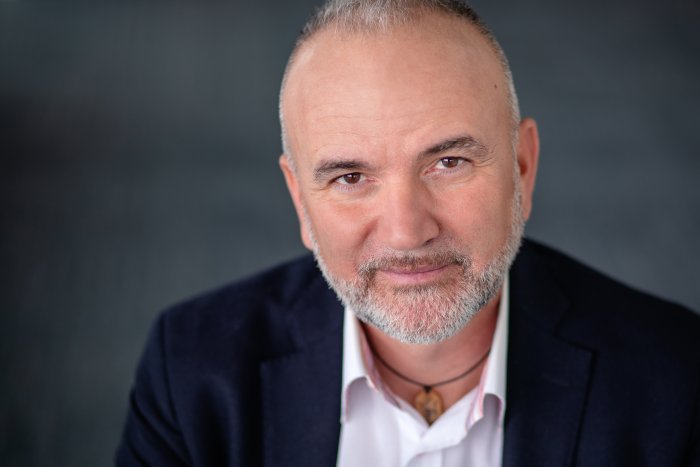5G to be Built on World-class 4G Network

György Koller, CTO of Telenor Hungary, talks to the Budapest Business Journal about the likely evolutionary path from 4G to 5G in Hungary.
György Koller
BBJ: We hear a lot of talk about the roll out of 5G. How is the 4G network holding up? Is it still fit-for-purpose? What can be done to update it until 5G rollout is complete?
György Koller: Hungarian customers are lucky in terms of mobile user experience as the Hungarian 4G networks available to the public are of world-class quality and they satisfy current needs. Telenor’s Hipernet network is available to more than 99% of the population. When it comes to standard daily mobile usage, continuously developing current 4G-based networks are capable of providing the high-quality user experience Hungarian customers have come to expect.
Telenor believes in 5G and wants to make a high-quality network available by the time there is genuine user and market need for this service, be it for business or industrial solutions or consumer applications. Currently, future 5G-based solutions can be fully supported by the existing network and 5G handsets have a very low penetration. Several countries at a more advanced stage of 5G implementation (e.g. South Korea) acted earlier because they were running out of 4G capacity and had no other option but upgrade to 5G.
Currently, we still have enough capacity reserves in our 4G network. Due to the constant development of the fourth generation technology, our network has nearly the same capacity now as was previously projected for 5G networks. The key benefits of 5G (lightning fast speed, ultra-low latency and concurrent use by a large number devices) will all be available more in the post-2022 period when standalone systems (those capable of operating without 4G networks) gain dominance.
The COVID lockdown has shown that the nationwide Hipernet network is able to smoothly cope with a sudden 30% increase in traffic and it demonstrated the capacity reserves available in this technology.
BBJ: Telenor has been placing a lot of emphasis around Lake Balaton. What have you been doing, and what has been the public response?
GyK: In an average summer season, the number of mobile users may increase more than tenfold in the Balaton region. In that period, the area often accounts for over 10% of nationwide mobile traffic. No other region experiences this rate of traffic increase in Hungary. During the three summer months, Balaton generates more than 10% of overall nationwide traffic, which makes it a key focus area not only for tourism but also for mobile communication. Telenor customers generate data traffic of nearly 20TB and send and receive more than 100,000 text messages in lakeside towns and villages on an average day.
In 2020, five new base stations were installed in the region for the beginning of the season to beef up our mobile internet and 4G voice services. In addition, 32 existing Telenor base stations had a capacity upgrade. Telenor provides a mobile network coverage of 97% for the nearly 140,000 people living in lakeside communities. This summer, a lot of Hungarians were expected to choose domestic vacation destinations instead of foreign ones due to the coronavirus pandemic, which is why we prepared for an even higher traffic than in previous years.
BBJ: How are customers habits (both business clients and retail clients) changing?
GyK: Overall mobile internet usage keeps growing from year to year as a general trend. People tend to use more internet, but this year (and especially the summer period) had an even higher growth than usual. The pandemic has transformed our phone usage habits as well as the place and way of communication. Both voice and data traffic started to grow on our network from mid-March. Interestingly, higher voice traffic was mostly attributable to longer calls.
Overall, daily data traffic was up by about 30% on average. This growth was visible on both uplink and downlink from the early morning hours on. In the summer months of the pandemic, calling habits changed relative to the summer of 2019. In July, 10% more text messages were sent and more calls were made. Moreover, calls were longer than the year before: the average number of call minutes increased by 10 to 15%. Nevertheless, most people used the internet to communicate with data traffic growing by 35% over the summer months of 2019.
Telenor customers used 59 million GB of data in total this summer which is 35% higher than the year before. The mobile network is designed for “peacetime” traffic including some capacity reserves. When the lockdown was announced, our network was prepared for a potential increase in traffic, enabling it to handle higher-than-average needs. The need for further capacity upgrades has been continuously monitored since. If we identify the need, we will take the necessary action.
As the geographical distribution of mobile usage is different now from the usual pattern (business day traffic declined in previously high-traffic areas, while it increased in traditionally low-traffic areas), our network was fine-tuned at more than 130 points across the country. As a result, network capacity was optimized for changed user needs in a very short time. A major change in usage habits was the increased importance of digital channels during the pandemic period.
BBJ: Hungary has fallen back in the OpenSignal ranking. What’s behind this? Should we be concerned?
GyK: It is the combined result of multiple factors that Hungary’s mobile network now ranks 17th on the OpenSignal list (which is still a fairly remarkable position) based on the Download Speed Index measurement (indicating average download bandwidth) evaluating operator data from 100 countries.
On the one hand, traffic has been massively increasing on the Hungarian network which requires further capacity upgrades. Currently, the 800MHz band is the most overloaded and it is often the only 4G spectrum band available at a base station. This situation will be changed significantly by the launch of the 700MHz low spectrum band later this year that is already used in other countries. It may result in an up to twofold increase in capacity.
On the other hand, the phasing out of 3G technology started in other countries earlier. Using the so-called “”refarming solution, the released spectrum (2,100MHz and 900MHz) was reallocated to 4G. Another notable factor is that wherever 5G is rolled out, it will also trigger the modernization of 4G equipment, which in turn results in higher capacities. Let me add, however, that Hungarian users are still lucky because Hungary’s 4G networks are of world-class quality.
BBJ: When will full 5G rollout be achieved?
GyK: The launch of commercial 5G services will be largely influenced by current market needs. Therefore, I cannot give you an exact date. 5G rollout was an urgent need in many countries of the world because their existing technologies were no longer capable of satisfying user needs.
The nationwide outdoor residential coverage of Hipernet 4G had reached 99.5% by 2020 and this constantly developing technology now offers a capacity close to what was projected for 5G before (and 4G still has some further development potential). In the near future, growing user needs may be served by 5G and 4G technologies combined, especially in high-traffic areas, but as was the case with past technology transitions, the new technology will take the place of existing solutions in a phased manner ensuring unbroken development.
BBJ: Once it is in place, what trends should we be looking out for?
GyK: 5G will probably bring about a change of the same magnitude as the switch between 2G and 3G. Offering better network parameters, and an ability to serve millions of devices concurrently at low network latency and high speed, 5G will create a broad range of new use cases for data services. In addition to consumer use, Telenor considers industrial applications and experiments as the most promising potential fields of using 5G in the near future. Until 5G is made available to B2C customers in a few years from now, 4G will continue to provide an outstanding experience that was unthinkable before.
We believe that customers will see the benefits of 5G through services developed by other market players in the years to come. The next few years will be more about development, as well as exploring new ways and viable business models.
SUPPORT THE BUDAPEST BUSINESS JOURNAL
Producing journalism that is worthy of the name is a costly business. For 27 years, the publishers, editors and reporters of the Budapest Business Journal have striven to bring you business news that works, information that you can trust, that is factual, accurate and presented without fear or favor.
Newspaper organizations across the globe have struggled to find a business model that allows them to continue to excel, without compromising their ability to perform. Most recently, some have experimented with the idea of involving their most important stakeholders, their readers.
We would like to offer that same opportunity to our readers. We would like to invite you to help us deliver the quality business journalism you require. Hit our Support the BBJ button and you can choose the how much and how often you send us your contributions.








